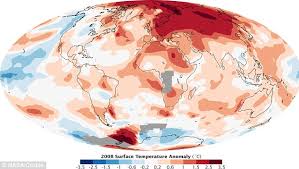El Nino of 2014-16 aided in massive carbon dioxide release: Study
According to recent study conducted by scientists, the monster El Nino of 2014-16 caused over 3 billion tonnes of carbon to get released into the atmosphere, pushing carbon dioxide (CO2) concentration to record levels.
The study was based on analysis of data collected by NASA’s Orbiting Carbon Observatory-2 (OCO-2) satellite, which measures level of CO2 in the atmosphere. These are the first measurements for satellite tracking CO2 levels.
El Nino
El Nino is a complex periodic climate event that causes waters to warm up in east-central Pacific Ocean. The warming of ocean causes huge changes in wind directions which bring less rain to south-east Asia and Indian subcontinent, while increasing rain in other parts of the world.
Key Highlights of study
The El Nino led to excessive carbon dioxide releases in three ways. They are (i) Hot weather and drought caused extensive wildfires in south-east Asia, (ii) Drought in the Amazon rainforest stunted plant growth, reducing the amount of carbon they absorb while growing (iii) Warmer weather and near normal rainfall in Africa caused forests to exhale more CO2.
The rate of growth of CO2 in the atmosphere had hit an all-time high of 2.94 parts per million per year in 2015 and slightly below that at 2.89 ppm per year in 2016. In other words, CO2 was being added to the atmosphere at a much higher rate than ever before even though carbon emissions were flat.
In 2014 and 2015, CO2 emissions from burning of fossil fuels had flattened out to about 36.2 billion tonnes. Projections for 2016 too indicated that emissions were still flat.
The industrialised countries do not appear to be on course to meet the targets that they pledged at the Paris Climate Accord of 2015. Emissions from European Union countries have actually increased in 2015, the rate at which emissions from US and Japan are declining does not comply with what they had pledged at Paris.
Month: Current Affairs - August, 2017


